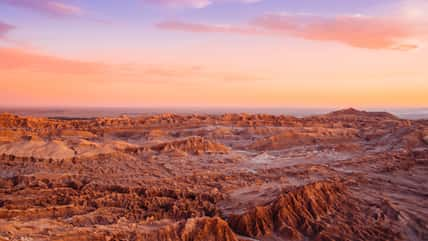The Fall Of The Roman Empire Was Fueled By A Little Ice Age, According To These Rocks In Iceland

Why exactly did the Roman Empire fall? The answer to this question has been heavily debated practically since the empire’s collapse.
Its demise was likely caused by a combination of many socio-political factors, but recent research suggests that a climate crisis may have contributed more than previously thought.
In the past, an analysis indicated that Earth experienced a 200 to 300 year-long ice age starting around 540 C.E.
Powerful volcanic eruptions were believed to have launched large amounts of ash and debris into the atmosphere, blocking out the sun and lowering global temperatures.
The event may not have been as intense as other major ice ages, but this era may have sped up the decline of Rome.
However, some argue that the Late Antique Little Ice Age just happened to occur at the same time as the fall of the empire.
New evidence supporting the theory that climate change pushed the Roman Empire to the brink has come in the form of strange rocks collected from the jagged cliffs of Iceland. The round stones were about the size of a human fist.
They were out of place because they were unlike anything found in Iceland today. The region is mostly known for its basalt, but researchers detected tiny crystals of the mineral zircon in the samples.
“Zircons are essentially time capsules that preserve vital information including when they crystalized as well as their compositional characteristics,” said Dr. Christopher Spencer, the lead author of the study and an associate professor at Queen’s University.

Sign up for Chip Chick’s newsletter and get stories like this delivered to your inbox.
“The combination of age and chemical composition allows us to fingerprint currently exposed regions of the Earth’s surface, much like is done in forensics.”
After the research team crushed the rocks and separated the zircon crystals, they determined that the minerals spanned three billion years of geologic history that can be traced back to Greenland. The newest rocks were 500 million years old.
In the 6th century A.D., during the Late Antique Little Ice Age, the zircon-rich rocks drifted across the sea over hundreds of miles, carried by icebergs.
The timing of the rocks’ arrival aligns with a period of widespread iceberg activity and historical records of a climate shift that darkened the skies, prevented the growth of crops, and chilled much of the Northern Hemisphere.
So, it’s easy to see how this chillier era’s effects on crops, civil unrest, and mass migrations could further weaken an already unstable empire.
“When it comes to the fall of the Roman Empire, this climate shift may have been the straw that broke the camel’s back,” said Tom Gernon, a co-author of the study and a professor of Earth science at the University of Southampton.
The details of the new study were published in the journal Geology.
More About:News





